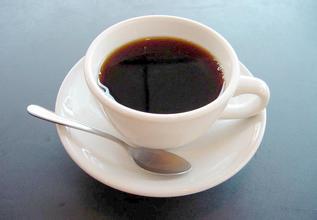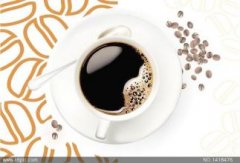A brief description of the flavor and aroma characteristics of Cupid coffee beans with bright taste

This is not only due to the superior ecological conditions of the Pokuit region of Panama and the fertile volcanic ash soil of the Baru volcanic land. Another important factor is that the microclimate in the Poquet Heights of Panama is a unique and important resource for boutique coffee in the Pokuit region. This is the Panamanian environment from east to west that allows cold air to converge above 6500 feet through the Central Mountains, thus creating a variety of microclimates in the Pokuit region, making its temperature and rainfall very suitable for plant growth. so the coffee trees grown here grow very well.
In Poquet's unique planting environment, there is naturally not only the rose summer of emerald, the king of coffee, regardless of flavor, quality and value, but I think it is quite extravagant to drink rose summer every day, and even if there is no economic pressure, it is not like eating shark's fin and bear's paw every day. The same is true of coffee. Only by dabbling in a wide range of subjects can you enjoy the pleasure of tasting coffee more.
When the commodity price of coffee was relatively low, the Panamanian Fine Coffee Association organized a competition called "Best Panama": coffee beans from different parts of Panama were ranked and auctioned online. Esmeralda Manor has been growing a kind of coffee called "Geisha" for many years, and the auction has made their coffee known to more people. Then they won the first place in the competition for four consecutive years from 2004 to 2007, and then won the competition again in 2009 and 2013. It kept breaking records until it was priced at $21/lb in 2004 and then rose to $170/lb in 2010. In 2013, a small portion of the sun-treated coffee was sold for $350.25/lb. There is no doubt that this is the highest price ever sold for a single manor coffee.
Unlike some other high-priced coffee (such as cat shit, Blue Mountain), the coffee quality of this estate is really up to its price level, although high demand and market factors also play a role. This record-breaking coffee tastes unusual: bright and strong floral and citrus flavors, full of tea. All these come from the advantage of "Geisha".
This estate has led to the cultivation of "Geisha" in many coffee plantations not only in Panama but also throughout Central America. For many coffee farmers, this variety means a high price, and to a large extent, this perception is correct. Because as a manor growing "Geisha", its coffee prices are always more expensive than other estates. Panama's geographical advantage is that it has many distinctive microclimate areas suitable for coffee cultivation, and Panama also has many persistent and professional coffee growers. This means there will be a lot of very good coffee in Panama, but these coffees are often associated with high prices.
The high price of coffee in Panama is mainly caused by the following factors:
Land price: for the people of North America, they very much want to buy a stable and beautiful land at a low price. Panama is such a place.
More Panamanian farmers export coffee in the name of manors to emphasize their manors
Panamanian labor law has higher requirements for labor employment, so the coffee industry has to pay higher wages, which has to be paid by consumers.
Esmeralda Manor
When it comes to coffee prices, we should pay great attention to a manor in Panama, and it can even be said that so far, no other single estate has had such an impact on coffee farming in Central America. This is Esmeralda Manor, which belongs to and is run by the Peterson family.
Panama is rich in forest resources and has many tree species, including valuable wood such as mahogany, cedar, teak, mahogany, and cedar. The forest area of eastern Dalian Province is the most widely distributed, but it has not been fully developed due to lack of market and for reasons such as national defense and protection of the natural ecological environment. [5] in 2010, FAO estimated that the forest area of Panama was 4.29 million hectares, accounting for 57 per cent of the land area. [9]
National symbol editor
National flag
The Panamanian flag was launched on November 3, 1904. The flag is rectangular and the ratio of length to width is 3:2. The flag consists of four rectangles of white, red and blue. White symbolizes peace; red and blue represent the former Panamanian Liberal Party and the Conservative Party respectively, and they are also symbols of the two parties' United struggle for the interests of the nation. The blue star on the white background at the top left represents loyalty and integrity, while the red star on the white background at the lower right represents the authority of the law. The design of the crosshairs divided into four pieces represents that Panama is located at the junction of South America, North America, Atlantic and Pacific Ocean. Red, blue and white are the colors of the American Stars and Stripes that support the independence of Panama. The flag was designed by Manuel Amador Guerrero, the first president of Panama. [6]
National emblem
The national emblem of Panama was launched in 1904 by a brown eagle with its head held high and its wings spread.
Panamanian national emblem
Panamanian national emblem
It stands on the national emblem with a white ribbon with the Panamanian motto "for the benefit of the world". In the middle of the national emblem is the brown isthmus of Panama, the blue Pacific and Caribbean seas, and the Panama Canal that connects them; under the blue sky, a bright moon has risen, the corresponding sunset is still shining in all directions, symbolizing the arrival of Panama's independence "at sunset and moonrise"; the silver sword and rifle crossed on the upper left have experienced the ups and downs of hundreds of years of war on Panamanian land. The T-pick and shovel on the upper right represent the country's call for active construction and hard work; the sheep's horn overflowing with gold coins and the golden two-winged flywheel symbolize the progress and prosperity of the country. Four national flags are decorated around the national emblem, and the top nine golden five-pointed stars represent the nine provinces of Panama. [6]
National bird
Condor is the national bird of Panama. It is the heaviest of all kinds of eagles. This kind of eagle has several upright feathers on its head, which looks like horns from a distance and is very powerful. [2]
National flower
There are many excellent manors in the Pokuit area, except the famous Emerald Manor, Alida Manor, Aqaba Manor and so on, all of which produce high-quality boutique coffee.
Important Notice :
前街咖啡 FrontStreet Coffee has moved to new addredd:
FrontStreet Coffee Address: 315,Donghua East Road,GuangZhou
Tel:020 38364473
- Prev

A brief introduction to the treatment method of grindability and baking degree of elegant Antigua coffee beans
Today, most of the coffee industry's production takes place in the south of the country. There are seven major coffee producing areas in Guatemala, and the flavor of coffee produced in each area is different, but to sum up, Guatemalan coffee has a mild and mellow overall texture, elegant aroma and special and pleasant acidity similar to fruit acid. it has become the aristocrat of coffee, among which Antigua
- Next

A brief introduction to the Origin, Development, History and Culture of Cupid Fine Coffee beans with strong Flower aroma
The high coffee price in Panama is mainly caused by the following factors: land price: for the people of North America, they are eager to buy a stable and beautiful land at a low price. Panama is such a place; Panama grows more farmers' export coffee in the name of manors to emphasize that its manor Gesha is one of the most primitive coffee varieties in the world.
Related
- Detailed explanation of Jadeite planting Land in Panamanian Jadeite Manor introduction to the grading system of Jadeite competitive bidding, Red bid, Green bid and Rose Summer
- Story of Coffee planting in Brenka region of Costa Rica Stonehenge Manor anaerobic heavy honey treatment of flavor mouth
- What's on the barrel of Blue Mountain Coffee beans?
- Can American coffee also pull flowers? How to use hot American style to pull out a good-looking pattern?
- Can you make a cold extract with coffee beans? What is the right proportion for cold-extracted coffee formula?
- Indonesian PWN Gold Mandrine Coffee Origin Features Flavor How to Chong? Mandolin coffee is American.
- A brief introduction to the flavor characteristics of Brazilian yellow bourbon coffee beans
- What is the effect of different water quality on the flavor of cold-extracted coffee? What kind of water is best for brewing coffee?
- Why do you think of Rose Summer whenever you mention Panamanian coffee?
- Introduction to the characteristics of authentic blue mountain coffee bean producing areas? What is the CIB Coffee Authority in Jamaica?

